Driving a Toyota Tacoma is an adventure, offering a blend of rugged capability and everyday usability, and millertoyota.net is your go-to resource for mastering the Tacoma experience. Whether you’re navigating Boise’s streets or exploring Idaho’s backroads, understanding your Tacoma is key. Learn about Tacoma maintenance, off-roading tips, and model comparisons.
1. What Makes the Toyota Tacoma a Great Choice for Boise Drivers?
The Toyota Tacoma stands out as a great choice for Boise drivers due to its versatility, reliability, and capability. According to a 2023 report by the Idaho Transportation Department, trucks like the Tacoma are increasingly popular due to their ability to handle both urban commuting and outdoor adventures. The Tacoma’s compact size, compared to full-size trucks, makes it easier to maneuver in Boise’s downtown area, while its robust build and available four-wheel drive are perfect for tackling Idaho’s diverse terrains.
- Versatility: The Tacoma is equally at home on city streets and rugged trails, making it ideal for Boise’s diverse lifestyle.
- Reliability: Toyota’s reputation for reliability means fewer unexpected repairs and more time enjoying your truck. J.D. Power consistently ranks Toyota high in reliability studies.
- Capability: Available four-wheel drive and off-road features make the Tacoma ready for any adventure Idaho throws your way.
- Resale Value: Tacomas hold their value exceptionally well, making them a smart investment. According to Kelley Blue Book, the Toyota Tacoma typically has one of the best resale values in its class.
- Community: Owning a Tacoma in Boise connects you to a thriving community of outdoor enthusiasts and truck lovers.
2. What Are The Key Features to Understand Before Driving a Toyota Tacoma?
Understanding the key features of your Toyota Tacoma ensures a safe and enjoyable driving experience. From its powerful engine to its advanced safety systems, the Tacoma offers a range of features designed to enhance performance and peace of mind.
- Engine Options: The Tacoma comes with either a 2.7-liter four-cylinder engine or a 3.5-liter V6 engine. The V6 offers more power for towing and off-roading.
- Transmission: Available in both manual and automatic transmissions, catering to different driving preferences.
- Four-Wheel Drive: Models equipped with four-wheel drive provide superior traction in challenging conditions, such as snow or off-road trails.
- Toyota Safety Sense P (TSS-P): Includes features like Pre-Collision System with Pedestrian Detection, Lane Departure Alert, and Automatic High Beams. According to the Insurance Institute for Highway Safety (IIHS), these features can significantly reduce the risk of accidents.
- Infotainment System: Features a touchscreen display with Apple CarPlay and Android Auto compatibility for seamless smartphone integration.
- Off-Road Features: TRD Off-Road models include features like Crawl Control, Multi-Terrain Select, and a locking rear differential for enhanced off-road capability.
- Towing Capacity: Depending on the configuration, the Tacoma can tow up to 6,800 pounds, making it suitable for hauling trailers and boats.
- Bed Features: The Tacoma’s bed includes features like a composite bed liner, adjustable tie-down cleats, and a 120V power outlet.
3. How Do You Start and Operate a Toyota Tacoma?
Starting and operating a Toyota Tacoma is straightforward, but familiarizing yourself with the controls ensures a smooth experience. The Tacoma’s intuitive design makes it easy to get behind the wheel and go.
-
Starting the Engine:
- Key Start: Insert the key into the ignition and turn it clockwise to start the engine.
- Push-Button Start: With the key fob in your pocket or nearby, press the brake pedal and push the start button.
-
Understanding the Instrument Panel:
- Speedometer: Displays your current speed.
- Tachometer: Shows the engine’s RPM (revolutions per minute).
- Fuel Gauge: Indicates the amount of fuel remaining in the tank.
- Temperature Gauge: Displays the engine’s temperature.
- Warning Lights: Pay attention to any warning lights that illuminate, such as the check engine light or low oil pressure light. Consult your owner’s manual for more information.
-
Operating the Transmission:
- Automatic Transmission: Shift into “D” for drive, “R” for reverse, “N” for neutral, and “P” for park.
- Manual Transmission: Depress the clutch pedal to shift gears. The shift pattern is usually displayed on the gearshift knob.
-
Using Four-Wheel Drive (If Equipped):
- 2H (Two-Wheel Drive High): For normal driving conditions on paved roads.
- 4H (Four-Wheel Drive High): For driving on slippery surfaces like snow or gravel. Engage while moving at a low speed.
- 4L (Four-Wheel Drive Low): For extreme off-road conditions requiring maximum traction. Engage while stopped in neutral.
-
Engaging Safety Features:
- Toyota Safety Sense P (TSS-P): This suite of safety features is automatically enabled. Adjust settings via the infotainment system.
- Blind Spot Monitor: Alerts you to vehicles in your blind spots.
- Rear Cross-Traffic Alert: Warns you of approaching vehicles when backing up.
-
Utilizing the Infotainment System:
- Touchscreen Display: Use the touchscreen to access navigation, audio, and smartphone integration features.
- Apple CarPlay and Android Auto: Connect your smartphone via USB or Bluetooth to access apps, music, and contacts.
- Voice Commands: Use voice commands to control various functions, such as making calls or playing music.
-
Parking:
- Use the rearview camera and parking sensors (if equipped) to assist with parking.
- Engage the parking brake when parked on an incline.
4. What Are The Best Driving Practices for Fuel Efficiency in a Toyota Tacoma?
Adopting best driving practices can significantly improve fuel efficiency in your Toyota Tacoma. Even a truck known for its ruggedness can be driven with economy in mind.
- Maintain a Steady Speed: Avoid sudden acceleration and braking. Gradual acceleration and maintaining a consistent speed can conserve fuel.
- Use Cruise Control: On highways, use cruise control to maintain a constant speed and optimize fuel consumption.
- Anticipate Traffic: Look ahead and anticipate traffic flow to avoid unnecessary braking and acceleration.
- Avoid Idling: Excessive idling wastes fuel. If you’re stopped for more than a minute, turn off the engine.
- Proper Tire Inflation: Ensure your tires are properly inflated to the recommended pressure. Underinflated tires increase rolling resistance and reduce fuel efficiency.
- Reduce Weight: Remove unnecessary items from the truck bed and cabin to reduce weight and improve fuel economy.
- Regular Maintenance: Keep your Tacoma properly maintained with regular oil changes, air filter replacements, and tune-ups. A well-maintained engine runs more efficiently.
- Use the Right Gear: In manual transmissions, shift into higher gears as soon as possible without lugging the engine.
- Minimize Air Conditioning Use: Using the air conditioning can significantly reduce fuel economy. Use it sparingly and consider opening the windows when possible.
- Drive Aerodynamically: Avoid driving with the windows open at high speeds, as this increases drag and reduces fuel efficiency.
5. How to Handle Different Driving Conditions in a Toyota Tacoma?
The Toyota Tacoma is built to handle a variety of driving conditions, from city streets to off-road trails. Knowing how to adjust your driving technique can ensure safety and control.
- Rain:
- Reduce Speed: Slow down and increase your following distance.
- Use Windshield Wipers: Ensure your wipers are in good condition and use them to maintain visibility.
- Avoid Standing Water: Steer clear of large puddles to prevent hydroplaning.
- Turn on Headlights: Even during the day, headlights improve visibility.
- Snow and Ice:
- Use Four-Wheel Drive: Engage 4H for added traction.
- Drive Slowly: Reduce your speed and avoid sudden movements.
- Increase Following Distance: Give yourself plenty of space to stop.
- Brake Gently: Avoid hard braking, which can cause skidding.
- Steer into Skids: If your vehicle starts to skid, gently steer in the direction of the skid.
- Off-Road:
- Engage Four-Wheel Drive: Use 4H or 4L depending on the terrain.
- Use Crawl Control (If Equipped): This feature helps maintain a slow, steady speed on difficult terrain.
- Select Multi-Terrain Select (If Equipped): Choose the appropriate mode for the terrain (e.g., Mud, Sand, Rocks).
- Maintain Momentum: Keep a steady speed to avoid getting stuck.
- Watch for Obstacles: Be aware of rocks, logs, and other obstacles in your path.
- Highway:
- Maintain a Safe Following Distance: Allow plenty of space between you and the vehicle in front of you.
- Use Cruise Control: Maintain a consistent speed and reduce fatigue.
- Be Aware of Blind Spots: Check your mirrors and blind spots before changing lanes.
- Stay Alert: Avoid distractions and stay focused on the road.
- City:
- Be Aware of Pedestrians and Cyclists: Watch for pedestrians and cyclists, especially in congested areas.
- Anticipate Traffic: Look ahead and anticipate traffic flow to avoid sudden stops.
- Use Defensive Driving Techniques: Be prepared for unexpected actions from other drivers.
- Maintain a Safe Following Distance: Allow enough space to stop safely in heavy traffic.
6. What Are The Safety Features and How To Use Them Effectively in Toyota Tacoma?
The Toyota Tacoma comes equipped with a range of safety features designed to protect you and your passengers. Understanding these features and how to use them effectively can enhance your safety on the road.
- Toyota Safety Sense P (TSS-P):
- Pre-Collision System with Pedestrian Detection: Detects vehicles and pedestrians in front of the vehicle and provides a warning. If a collision is imminent, the system can automatically apply the brakes.
- Lane Departure Alert: Alerts you if you start to drift out of your lane.
- Automatic High Beams: Automatically switches between high and low beams depending on the presence of other vehicles.
- Dynamic Radar Cruise Control: Maintains a set speed and following distance from the vehicle in front of you.
- Blind Spot Monitor:
- Alerts you to vehicles in your blind spots with a warning light in the side mirror.
- Rear Cross-Traffic Alert:
- Warns you of approaching vehicles when backing up.
- Anti-lock Braking System (ABS):
- Prevents the wheels from locking up during hard braking, allowing you to maintain steering control.
- Vehicle Stability Control (VSC):
- Helps prevent skidding by applying brakes to individual wheels and reducing engine power.
- Traction Control (TRAC):
- Limits wheelspin on slippery surfaces to improve traction.
- Hill Start Assist Control (HAC):
- Prevents the vehicle from rolling backward when starting on a steep hill.
- Tire Pressure Monitoring System (TPMS):
- Monitors the air pressure in your tires and alerts you if the pressure is too low.
- Airbags:
- Front, side, and curtain airbags provide protection in the event of a collision.
- Using Safety Features Effectively:
- Read the Owner’s Manual: Familiarize yourself with the operation of each safety feature.
- Adjust Settings: Customize the settings of safety features to your preferences.
- Maintain Sensors: Keep sensors clean and free of obstructions.
- Stay Alert: Safety features are designed to assist you, but they are not a substitute for attentive driving.
7. What Routine Maintenance Tasks Are Important for Toyota Tacoma?
Routine maintenance is essential for keeping your Toyota Tacoma running smoothly and reliably. Following the recommended maintenance schedule can prevent costly repairs and extend the life of your truck.
- Oil Changes:
- Change the engine oil and filter every 5,000 to 10,000 miles, depending on driving conditions and oil type.
- Tire Rotation:
- Rotate the tires every 5,000 to 8,000 miles to ensure even wear.
- Brake Inspection:
- Inspect the brakes every 15,000 miles and replace brake pads and rotors as needed.
- Fluid Checks:
- Check and top off fluids regularly, including coolant, brake fluid, power steering fluid, and windshield washer fluid.
- Air Filter Replacement:
- Replace the engine air filter every 15,000 to 30,000 miles.
- Cabin Air Filter Replacement:
- Replace the cabin air filter every 15,000 to 30,000 miles to ensure clean air inside the cabin.
- Spark Plug Replacement:
- Replace the spark plugs every 30,000 to 100,000 miles, depending on the type of spark plugs.
- Timing Belt Replacement (If Applicable):
- Replace the timing belt every 90,000 to 100,000 miles to prevent engine damage.
- Battery Inspection:
- Inspect the battery regularly and replace it every 3 to 5 years.
- Hose and Belt Inspection:
- Inspect hoses and belts for cracks and wear and replace them as needed.
- Alignment:
- Check the wheel alignment every 12 months or 12,000 miles.
- Following the Maintenance Schedule:
- Refer to your owner’s manual for the recommended maintenance schedule.
- Keep records of all maintenance performed on your Tacoma.
8. What Are Common Issues and Troubleshooting Tips for Toyota Tacoma?
Even with regular maintenance, Toyota Tacomas can experience common issues. Knowing how to troubleshoot these problems can save you time and money.
- Rough Shifting:
- Possible Causes: Low transmission fluid, worn clutch (manual transmission), or faulty transmission sensors.
- Troubleshooting: Check the transmission fluid level and add fluid if needed. If the problem persists, consult a mechanic.
- Check Engine Light:
- Possible Causes: Loose gas cap, faulty oxygen sensor, or other engine-related issues.
- Troubleshooting: Check the gas cap and tighten it if loose. Use an OBD-II scanner to read the error code and diagnose the problem.
- Brake Noise:
- Possible Causes: Worn brake pads, glazed rotors, or debris in the brake system.
- Troubleshooting: Inspect the brake pads and rotors for wear. Clean the brake system and replace worn parts.
- Electrical Problems:
- Possible Causes: Blown fuses, faulty wiring, or a dead battery.
- Troubleshooting: Check the fuses and replace any that are blown. Inspect the wiring for damage and test the battery.
- Suspension Noise:
- Possible Causes: Worn shocks, struts, or bushings.
- Troubleshooting: Inspect the suspension components for wear and replace worn parts.
- Rust:
- Possible Causes: Exposure to salt and moisture.
- Troubleshooting: Wash the vehicle regularly and apply rust protection products.
- Loss of Power:
- Possible Causes: Clogged fuel filter, faulty fuel pump, or vacuum leaks.
- Troubleshooting: Replace the fuel filter and check the fuel pump. Inspect the vacuum lines for leaks.
- Vibrations:
- Possible Causes: Unbalanced tires, worn suspension components, or a bent wheel.
- Troubleshooting: Have the tires balanced and inspect the suspension components. Check the wheels for damage.
9. How Does The Toyota Tacoma Perform in Off-Road Situations?
The Toyota Tacoma is renowned for its off-road capabilities, making it a favorite among outdoor enthusiasts. Its rugged design and available off-road features allow it to tackle challenging terrains with confidence.
- Four-Wheel Drive:
- The Tacoma’s four-wheel-drive system provides superior traction in off-road conditions.
- TRD Off-Road Package:
- Includes features like Crawl Control, Multi-Terrain Select, and a locking rear differential for enhanced off-road performance.
- Crawl Control:
- Automatically modulates the throttle and brakes to maintain a slow, steady speed on difficult terrain.
- Multi-Terrain Select:
- Allows you to choose the appropriate mode for the terrain (e.g., Mud, Sand, Rocks) to optimize traction.
- Locking Rear Differential:
- Provides equal power to both rear wheels, improving traction in slippery or uneven terrain.
- Ground Clearance:
- The Tacoma’s high ground clearance allows it to clear obstacles and navigate rough terrain.
- Approach and Departure Angles:
- The Tacoma’s favorable approach and departure angles enable it to climb steep inclines and descend without scraping the front or rear bumper.
- Suspension:
- The Tacoma’s off-road-tuned suspension provides a smooth and controlled ride on rough terrain.
- Skid Plates:
- Skid plates protect the engine, fuel tank, and transfer case from damage when off-roading.
- Off-Road Driving Techniques:
- Maintain Momentum: Keep a steady speed to avoid getting stuck.
- Choose the Right Gear: Select the appropriate gear for the terrain.
- Watch for Obstacles: Be aware of rocks, logs, and other obstacles in your path.
- Use Spotters: Use spotters to guide you through difficult sections.
10. What Are The Modifications and Upgrades To Enhance Toyota Tacoma’s Performance?
Modifying and upgrading your Toyota Tacoma can enhance its performance and customize it to your specific needs. Whether you’re looking to improve off-road capability, increase power, or enhance its appearance, there are numerous options available.
- Suspension Upgrades:
- Lift Kits: Increase ground clearance and allow for larger tires.
- Shocks and Struts: Improve ride quality and off-road performance.
- Leaf Springs: Increase load capacity and improve suspension performance.
- Tire Upgrades:
- Off-Road Tires: Provide better traction in off-road conditions.
- All-Terrain Tires: Offer a balance of on-road and off-road performance.
- Engine Upgrades:
- Cold Air Intake: Improves engine airflow and increases horsepower.
- Exhaust System: Improves exhaust flow and increases horsepower.
- Engine Tuner: Optimizes engine performance and fuel efficiency.
- Armor:
- Skid Plates: Protect the engine, fuel tank, and transfer case from damage when off-roading.
- Rock Sliders: Protect the rocker panels from damage when off-roading.
- Bumpers: Provide better protection and improve the vehicle’s appearance.
- Lighting:
- LED Headlights: Improve visibility and enhance the vehicle’s appearance.
- Off-Road Lights: Provide additional lighting for off-road driving.
- Storage Solutions:
- Bed Racks: Provide additional storage space for gear and equipment.
- Bed Covers: Protect cargo from the elements and improve fuel efficiency.
- Interior Upgrades:
- Seat Covers: Protect the seats and improve the interior’s appearance.
- Floor Mats: Protect the floor from dirt and debris.
- Considerations When Modifying:
- Budget: Determine your budget and prioritize your modifications.
- Intended Use: Consider how you will be using your Tacoma and choose modifications that are appropriate for your needs.
- Compatibility: Ensure that the modifications are compatible with your vehicle.
- Professional Installation: Consider having a professional install the modifications to ensure they are done correctly.
FAQ: Mastering Your Toyota Tacoma Driving Experience
-
How often should I rotate the tires on my Toyota Tacoma?
Rotating your tires every 5,000 to 8,000 miles ensures even wear and prolongs tire life. This simple maintenance task can save you money in the long run.
-
What is the recommended oil change interval for a Toyota Tacoma?
Change the engine oil and filter every 5,000 to 10,000 miles, depending on driving conditions and oil type. Regular oil changes keep your engine running smoothly.
-
How do I engage four-wheel drive in my Toyota Tacoma?
For models with four-wheel drive, shift into 4H for slippery surfaces while moving at a low speed. Use 4L for extreme off-road conditions, engaging while stopped in neutral.
-
What is Toyota Safety Sense P (TSS-P) and how does it work?
TSS-P is a suite of safety features including Pre-Collision System, Lane Departure Alert, and Automatic High Beams, designed to enhance safety and prevent accidents.
-
What should I do if the check engine light comes on in my Toyota Tacoma?
Check the gas cap first, and if the light persists, use an OBD-II scanner to read the error code and diagnose the problem. Consult a mechanic if needed.
-
How can I improve fuel efficiency in my Toyota Tacoma?
Maintain a steady speed, use cruise control on highways, avoid idling, and ensure proper tire inflation to optimize fuel consumption.
-
What are some common off-road features in the Toyota Tacoma TRD Off-Road model?
The TRD Off-Road model includes Crawl Control, Multi-Terrain Select, and a locking rear differential for enhanced off-road capability.
-
How do I troubleshoot rough shifting in my Toyota Tacoma?
Check the transmission fluid level and add fluid if needed. If the problem persists, consult a mechanic for further diagnosis.
-
What are some modifications I can make to enhance my Toyota Tacoma’s off-road performance?
Consider suspension upgrades, off-road tires, skid plates, and rock sliders to improve your Tacoma’s off-road capabilities.
-
Where can I find reliable service and maintenance for my Toyota Tacoma in Boise?
Visit millertoyota.net for expert service, genuine parts, and a team dedicated to keeping your Tacoma in top condition.
Ready to experience the Toyota Tacoma for yourself? Visit millertoyota.net today to explore our inventory, schedule a test drive, and discover exclusive offers. Our team is here to help you find the perfect Tacoma and provide expert service to keep it running smoothly for years to come. Contact us at +1 (208) 376-8888 or stop by our dealership at 208 N Maple Grove Rd, Boise, ID 83704, United States. Discover why the Toyota Tacoma is the ultimate choice for Boise drivers. Explore our current promotions, schedule your service appointment, or order genuine Toyota parts all at millertoyota.net.
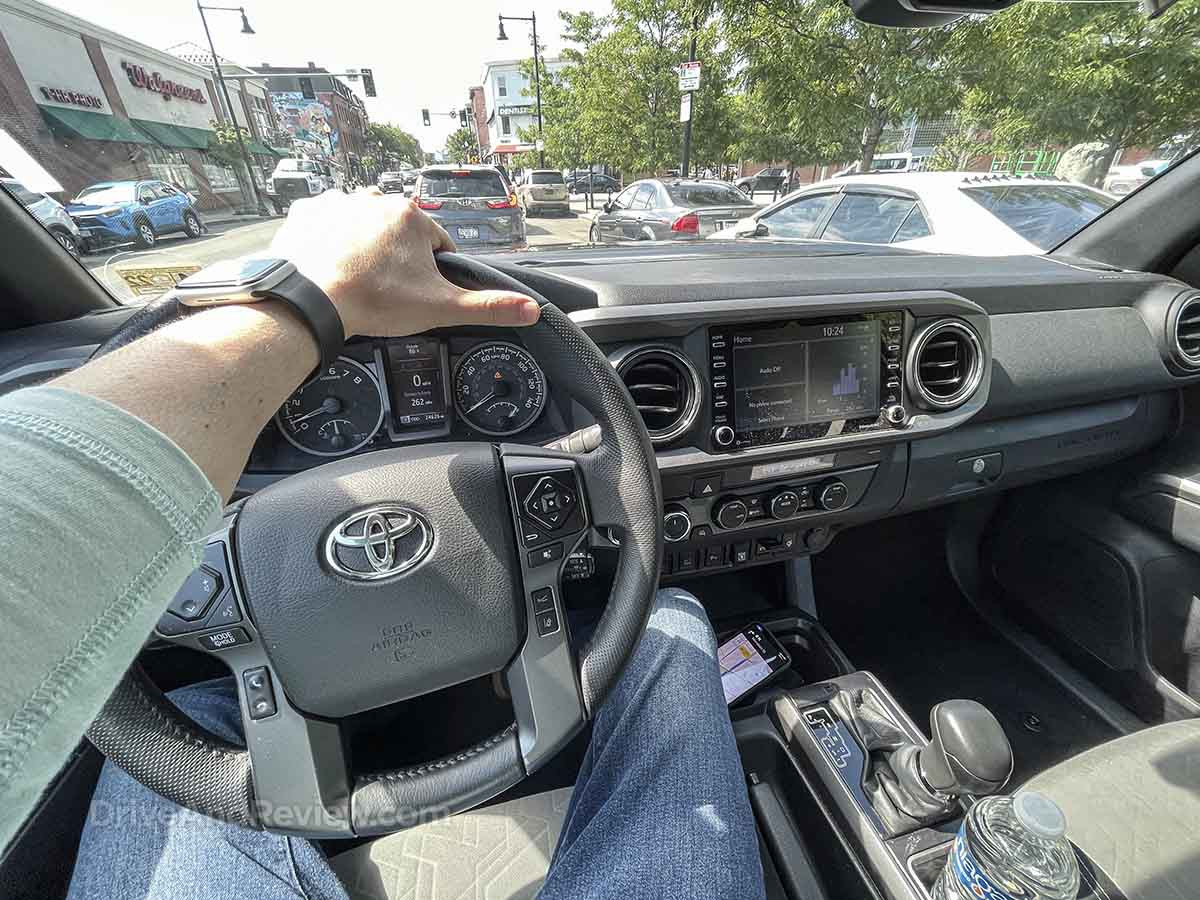 driving a Toyota Tacoma in the city
driving a Toyota Tacoma in the city
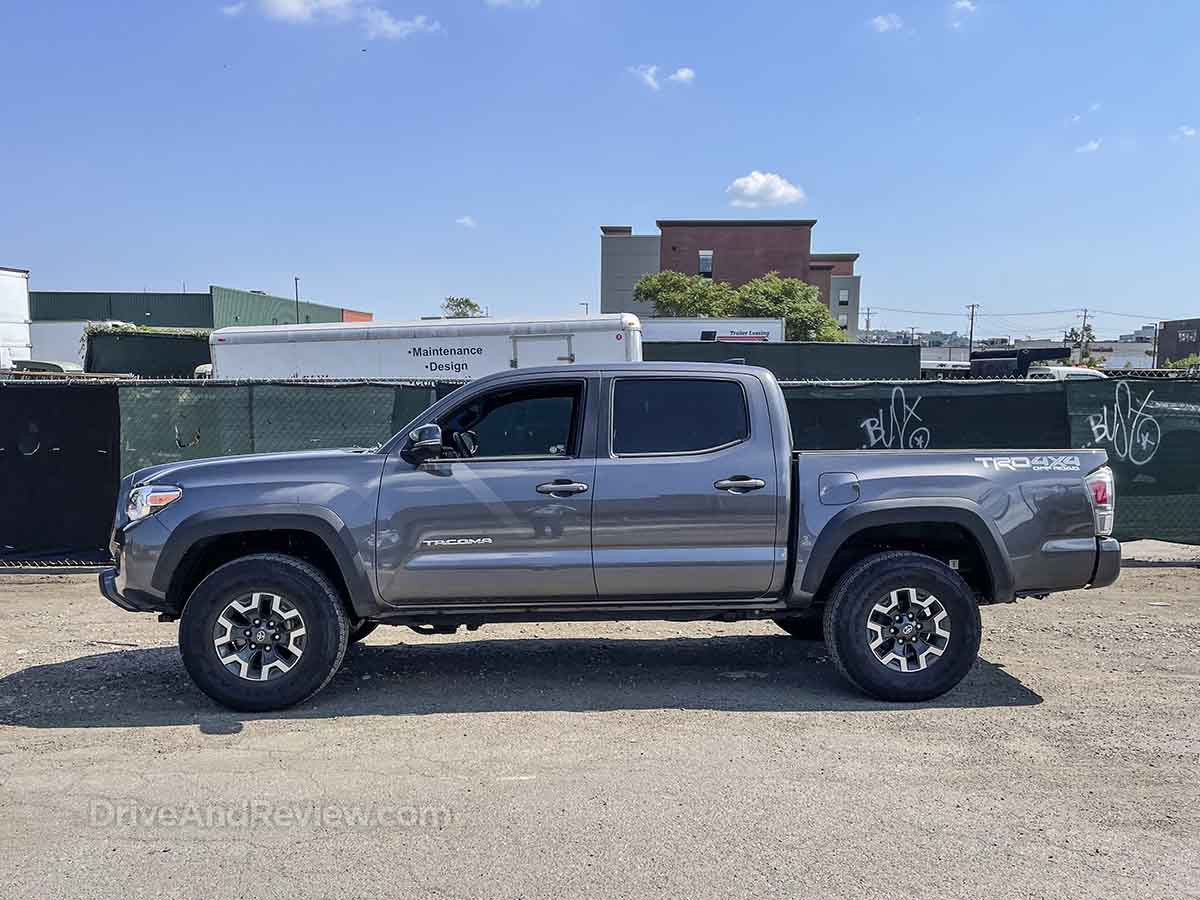 2021 gray Toyota Tacoma side view
2021 gray Toyota Tacoma side view
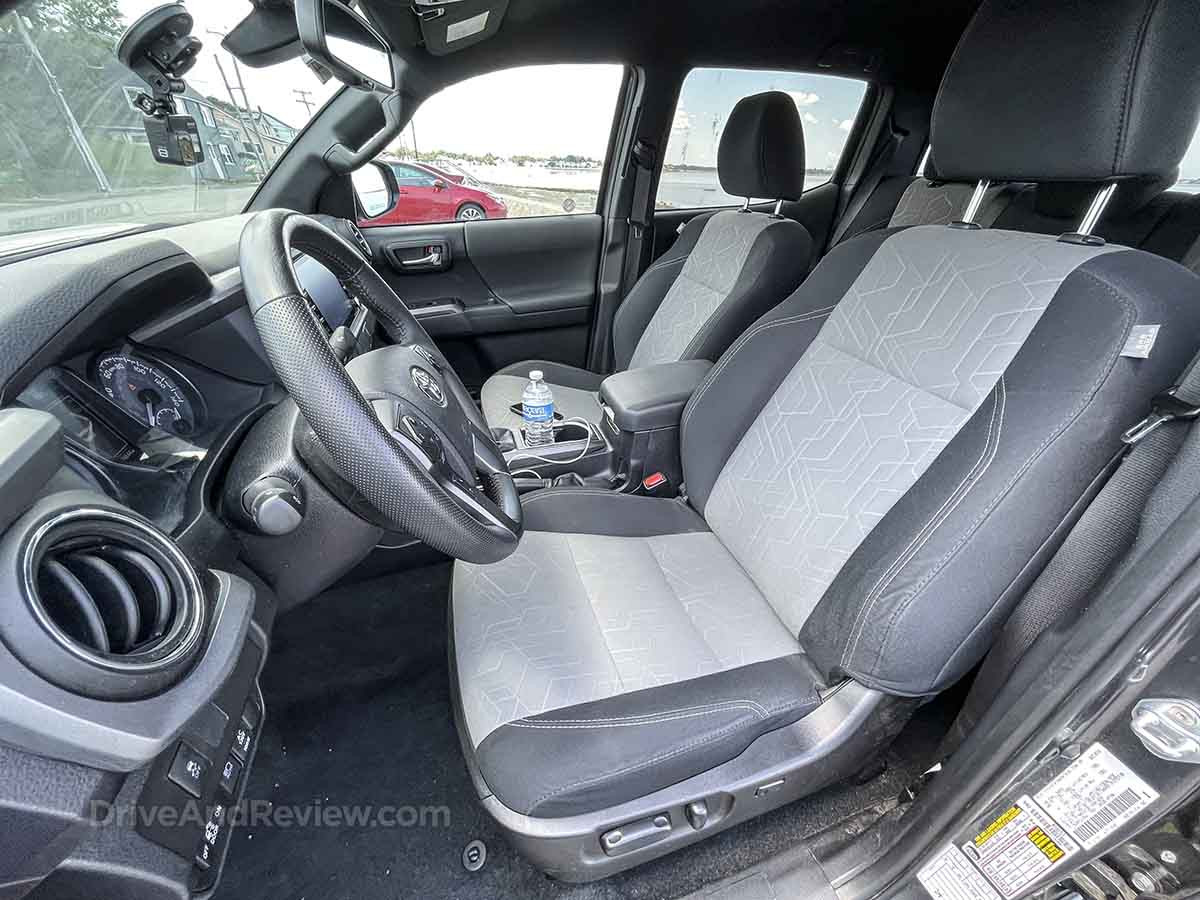 2021 toyota tacoma interior
2021 toyota tacoma interior
 2021 toyota tacoma bed and tailgate
2021 toyota tacoma bed and tailgate
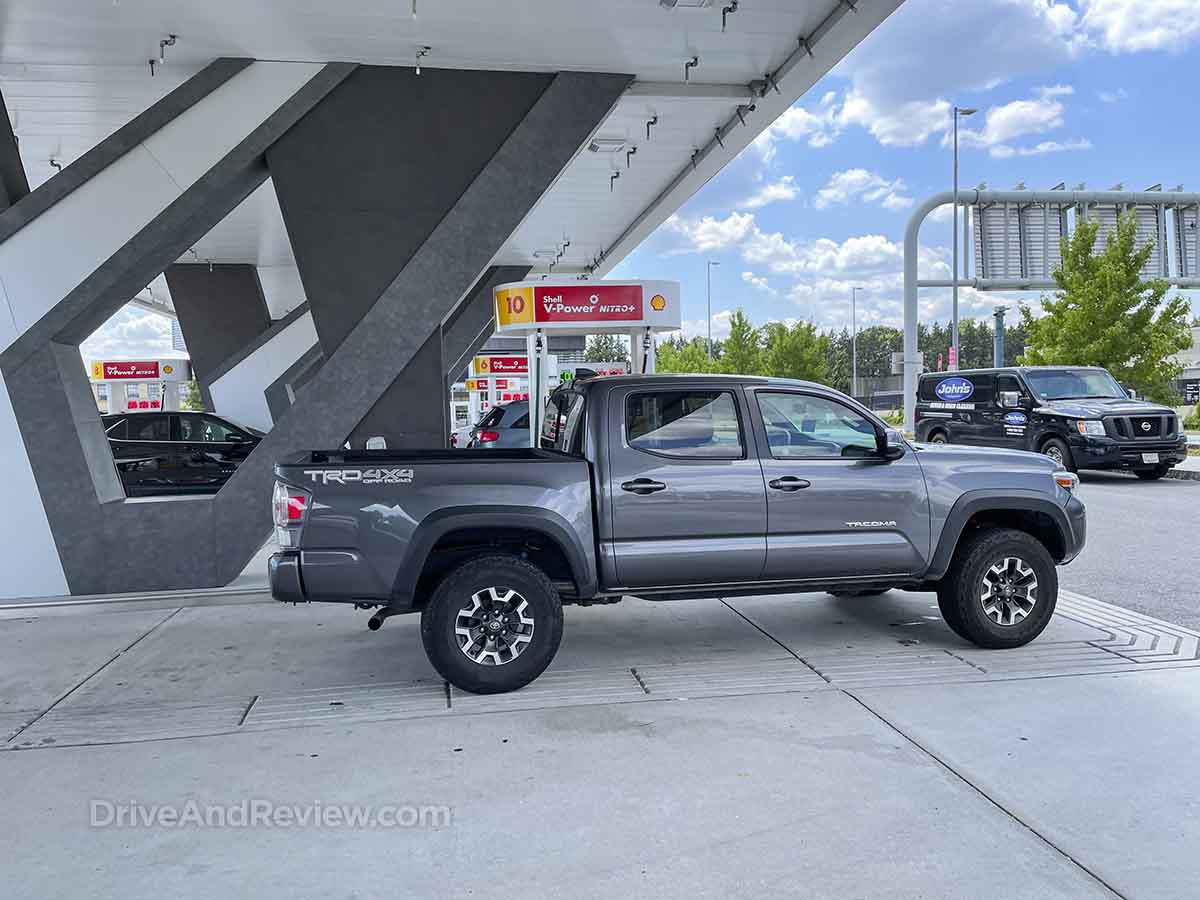 2021 Toyota Tacoma at the gas station
2021 Toyota Tacoma at the gas station
 toyota tacoma engine
toyota tacoma engine
 apple car play Toyota Tacoma
apple car play Toyota Tacoma
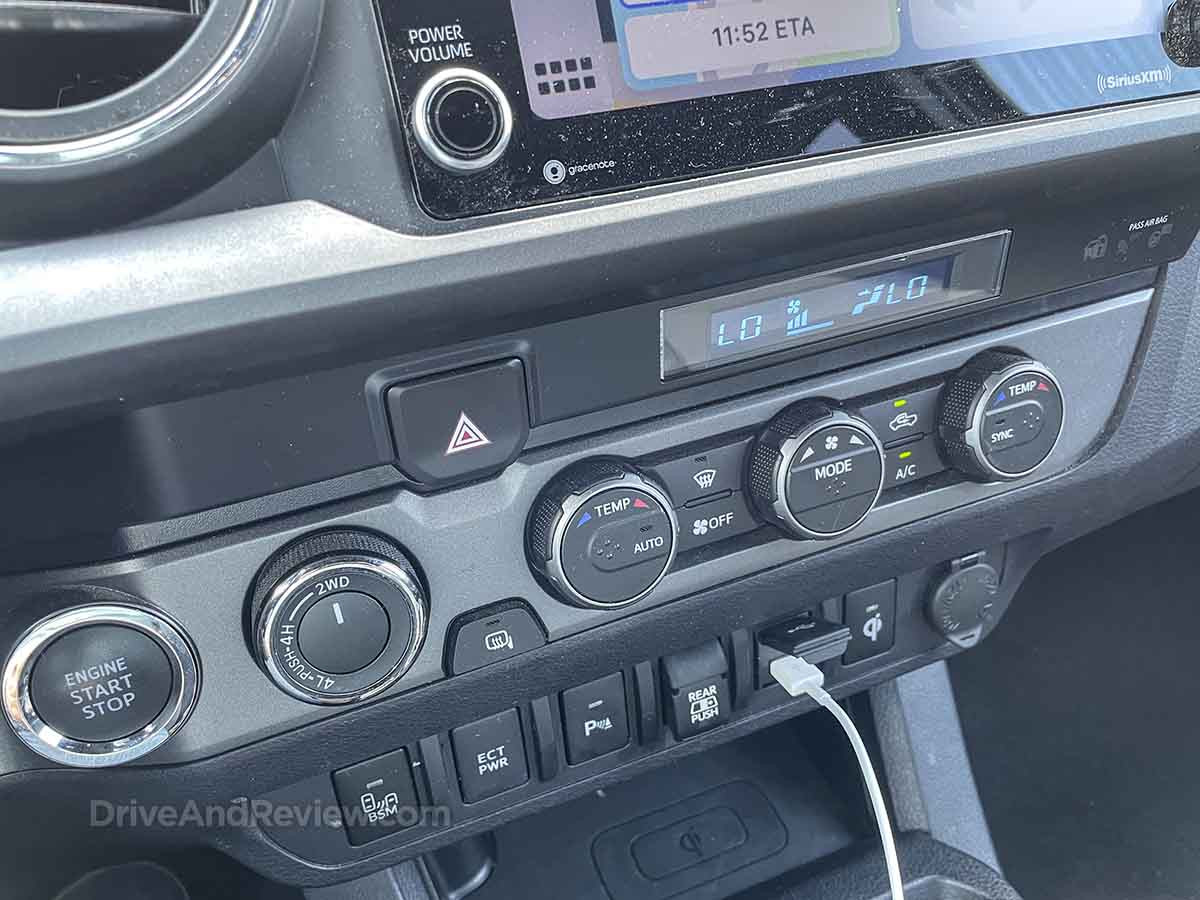 2021 Toyota Tacoma climate control buttons
2021 Toyota Tacoma climate control buttons
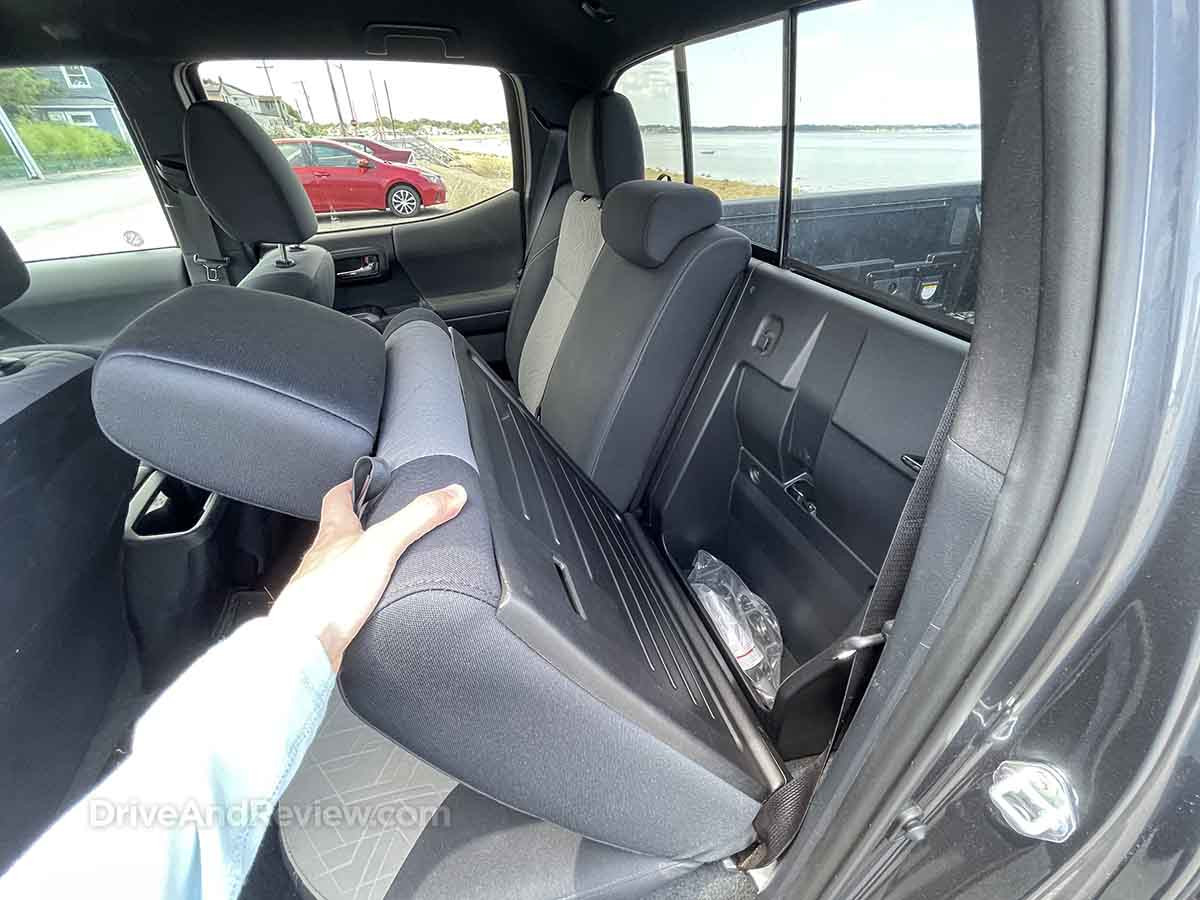 2021 Toyota Tacoma storage behind rear seats
2021 Toyota Tacoma storage behind rear seats
 2021 Toyota Tacoma front end
2021 Toyota Tacoma front end
 Driving a Toyota Tacoma in city traffic
Driving a Toyota Tacoma in city traffic
[